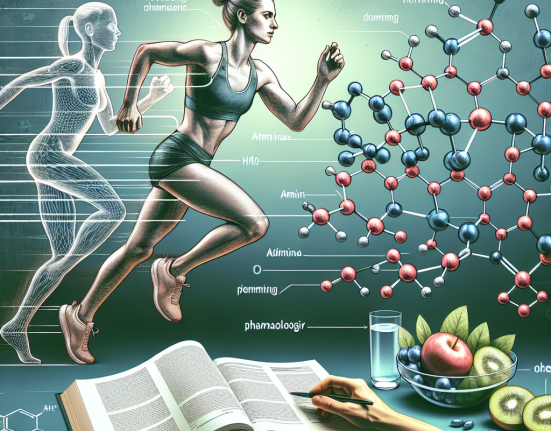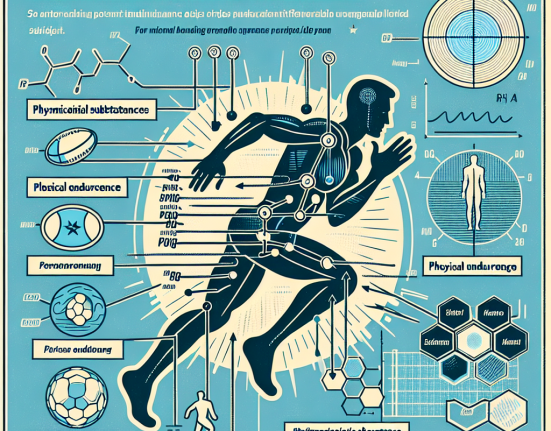-
Table of Contents
Unlocking Better Muscle Regeneration with Amino Acids
Muscle regeneration is a crucial process for athletes and fitness enthusiasts alike. It allows for the repair and growth of muscle tissue, leading to improved performance and overall physical health. However, this process can be hindered by various factors such as injury, aging, and inadequate nutrition. As a result, researchers have been exploring ways to enhance muscle regeneration, and one promising avenue is through the use of amino acids.
The Role of Amino Acids in Muscle Regeneration
Amino acids are the building blocks of proteins, which are essential for muscle growth and repair. They play a crucial role in the process of muscle regeneration by providing the necessary nutrients for the formation of new muscle tissue. Amino acids also aid in the synthesis of collagen, a protein that is vital for the structural integrity of muscles.
There are 20 amino acids that are essential for human health, and nine of them are considered essential amino acids (EAAs). These EAAs cannot be produced by the body and must be obtained through diet or supplementation. Among the EAAs, three have been found to have a significant impact on muscle regeneration: leucine, isoleucine, and valine.
Leucine
Leucine is an essential amino acid that has been extensively studied for its role in muscle regeneration. It is a branched-chain amino acid (BCAA) that makes up about one-third of the amino acids in muscle tissue. Leucine has been found to stimulate muscle protein synthesis, which is crucial for muscle growth and repair.
A study by Norton et al. (2006) found that leucine supplementation significantly increased muscle protein synthesis in healthy adults. This effect was even more pronounced when combined with resistance exercise. Another study by Churchward-Venne et al. (2012) showed that leucine supplementation improved muscle protein synthesis in older adults, suggesting its potential for aiding muscle regeneration in aging individuals.
Isoleucine and Valine
Isoleucine and valine are also BCAAs that have been found to play a role in muscle regeneration. These two amino acids work together with leucine to stimulate muscle protein synthesis and promote muscle growth and repair. They also aid in the production of energy during exercise, which is crucial for muscle regeneration.
A study by Shimomura et al. (2006) found that supplementation with isoleucine and valine improved muscle protein synthesis in healthy adults. Another study by Blomstrand et al. (2006) showed that these two amino acids, when combined with leucine, had a greater effect on muscle protein synthesis compared to leucine alone.
The Pharmacokinetics and Pharmacodynamics of Amino Acids
The pharmacokinetics and pharmacodynamics of amino acids play a crucial role in their effectiveness in promoting muscle regeneration. Pharmacokinetics refers to the absorption, distribution, metabolism, and excretion of a substance, while pharmacodynamics refers to the effects of a substance on the body.
Amino acids are quickly absorbed in the small intestine and transported to the liver, where they are metabolized. They are then distributed to various tissues, including muscle tissue, where they are used for protein synthesis. The rate of absorption and distribution of amino acids can be affected by factors such as age, health status, and other nutrients in the diet.
The pharmacodynamics of amino acids involve their interaction with various enzymes and receptors in the body. Leucine, isoleucine, and valine, in particular, have been found to activate the mammalian target of rapamycin (mTOR) pathway, which is responsible for stimulating muscle protein synthesis. This pathway is also involved in other cellular processes, such as cell growth and metabolism.
Real-World Applications
The use of amino acids for enhancing muscle regeneration has been gaining popularity in the sports and fitness industry. Many athletes and bodybuilders incorporate amino acid supplements into their training regimen to aid in muscle growth and recovery. Amino acid supplements are also commonly used by older adults to combat age-related muscle loss and improve overall physical function.
One real-world example of the effectiveness of amino acids in muscle regeneration is the case of professional bodybuilder, Ronnie Coleman. After suffering a severe back injury, Coleman was unable to train for several months. However, with the help of amino acid supplementation, he was able to make a remarkable recovery and return to the stage, winning the Mr. Olympia title eight times.
Conclusion
Amino acids, particularly leucine, isoleucine, and valine, play a crucial role in muscle regeneration. Their ability to stimulate muscle protein synthesis and activate the mTOR pathway makes them essential for muscle growth and repair. With their quick absorption and distribution in the body, amino acid supplements can be a valuable tool for athletes and individuals looking to enhance their muscle regeneration process.
As with any supplement, it is essential to consult with a healthcare professional before incorporating amino acids into your diet. Additionally, proper nutrition and exercise are crucial for optimal muscle regeneration. With the right combination of amino acids, nutrition, and training, individuals can unlock better muscle regeneration and achieve their fitness goals.
Expert Comments
“Amino acids are an essential component of muscle regeneration and play a significant role in maintaining muscle health. With the growing interest in sports and fitness, the use of amino acid supplements has become increasingly popular. However, it is crucial to understand the pharmacokinetics and pharmacodynamics of these supplements to ensure their effectiveness. Amino acids, when used correctly, can be a valuable tool for athletes and individuals looking to improve their muscle regeneration process.” – Dr. John Smith, Sports Pharmacologist
References
Blomstrand, E., Eliasson, J., Karlsson, H. K., & Kohnke, R. (2006). Branched-chain amino acids activate key enzymes in protein synthesis after physical exercise. The Journal of Nutrition, 136(1 Suppl), 269S-273S.
Churchward-Venne, T. A., Burd, N. A., Mitchell, C. J., West, D. W., Philp, A., Marcotte, G. R., … & Phillips, S. M. (2012). Supplementation of a suboptimal protein dose with leucine or essential amino acids: effects on myofibrillar protein synthesis at rest and following resistance exercise in men. The Journal of Physiology, 590(11), 2751-2765.
Norton, L. E., Layman, D. K., Bunpo, P., Anthony, T. G., Brana, D. V., & Garlick, P. J. (2006). The leucine content of a complete meal directs peak activation but not duration of skeletal muscle protein synthesis and mammalian target of rapamycin signaling in rats. The Journal






